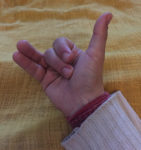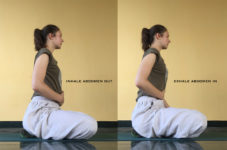Pranayama is a Sanskrit term used to describe a number of different practices focusing on control of the breath. Its literal translation is restraint of the vital energy. This vital energy or life force is responsible for animating the body and mind, appearing most visible in the breath.
Our state of mind is reflected in the way we breathe. When the mind is anxious or stressed, the breath becomes rapid and shallow. When the mind is tense, or is feeling suspense, we often hold our breath. When the mind is relaxed, the breath becomes slow and calm. As you gain mastery over your breath you also gain control over the mind. Someone who has control over their breath is calm and centered throughout life.
Pranayama techniques are practiced to cleanse the lungs, build reserves of prana (vital energy) and balance the mind. Often in our busy lifestyles we focus on conserving just enough energy to make it through the next day. However, yogic practices allow us to not only conserve our energy, but to gather a supply of extra energy for future use.
If you are new to these techniques, it is recommended you first practice and master the Abdominal Breath and Full Yogic Breath. Once these two breathing techniques are natural the two main Pranayamas will also come with ease. Don’t underestimate the power of the breath, even the simple abdominal breath if practiced throughout the day is a powerful tool for calming the mind and relieving stress.
Om Shanti!





